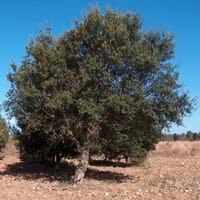Life Span
Perennial
Perennial
Type
Flowering Plants
Shrub
Origin
Mediterranean, North Africa, Northern America
China
Types
Anthony Peak Lupine, Silver Bush, Garden Lupine, Spider Lupine, Adonis Lupine
Not Available
Number of Varieties
Not Available
Habitat
Pine barrens, Sandy areas
Hills, Lower slopes, open Woodlands
USDA Hardiness Zone
3-7
4-8
Sunset Zone
1a, 1b, 2a, 2b, 3a, 3b, 4, 5, 6, 7, 14, 15, 16, 17
A3, 1a, 1b, 2a, 2b, 3a, 3b, 4, 5, 6, 7, 8, 9, 14, 15, 16, 17, 18, 19, 20, 21
Habit
Upright/Erect
Upright/Erect
Flower Color
Blue, Pink, White
Light Green
Flower Color Modifier
Not Available
Not Available
Fruit Color
Not Available
Brown, Light Green, Lime Green
Leaf Color in Spring
Light Green
Green, Light Green
Leaf Color in Summer
Green
Green, Light Green
Leaf Color in Fall
Green
Red
Leaf Color in Winter
Not Available
Not Available
Leaf Shape
Oblovate
Lobed
Plant Season
Summer
Spring, Summer, Fall, Winter
Sunlight
Full Sun, Part sun
Full Sun, Partial Sun, Partial shade
Type of Soil
Loose, Moist
Clay, Loam, Sand
The pH of Soil
Slightly Acidic
Acidic, Neutral, Alkaline
Soil Drainage
Well drained
Well drained
Bloom Time
Late Spring, Summer
Late Spring, Early Summer
Tolerances
Not Available
Drought, Salt
Where to Plant?
Ground
Ground, Pot
How to Plant?
Seedlings
Seedlings
Plant Maintenance
Medium
Low
Watering Requirements
Form a Soil ring to water efficiently, Keep the ground moist but not water-logged, Requires a lot of watering, Water in morning to avoid prompting diseases
Average Water Needs, Requires regular watering, Requires watering in the growing season
In Summer
Lots of watering
Lots of watering
In Spring
Moderate
Moderate
In Winter
Average Water
Average Water
Soil pH
Slightly Acidic
Acidic, Neutral, Alkaline
Soil Type
Loose, Moist
Clay, Loam, Sand
Soil Drainage Capacity
Well drained
Well drained
Sun Exposure
Full Sun, Part sun
Full Sun, Partial Sun, Partial shade
Pruning
Prune ocassionally
No pruning needed
Fertilizers
All-Purpose Liquid Fertilizer
No fertilizers needed
Pests and Diseases
Aphids, Fusarium wilt, Root rot, Thripes
Red blotch, Spider mites
Plant Tolerance
Drought
Drought, Salt
Flowers
Yes
Insignificant
Flower Petal Number
Single
Single
Foliage Texture
Medium
Medium
Foliage Sheen
Matte
Matte
Allergy
Abdominal pain, Asthma, Nausea, Swelling in the face, Vomiting
Asthma
Aesthetic Uses
Showy Purposes
Landscape Designing
Beauty Benefits
Not Available
Not Available
Environmental Uses
Air purification
Air purification, Forms dense stands, Nesting sites for birds, No fertilizer, pesticides, or herbicides needed, Prevent Soil Erosion, Shadow Tree, Windbreak
Medicinal Uses
Anthelmintic, Diuretic, Treatment of ulcers
No Medicinal Use
Part of Plant Used
Flowers, Seeds
Bark, Stem
Other Uses
Showy Purposes, Used as Ornamental plant, Used for fragrance
Used as firewood, Used for woodware, Used in biomass, Used in construction, Used in Furniture, Wood is used for ship building, Wood is used in construction, Wood log is used in making fences
Used As Indoor Plant
No
No
Used As Outdoor Plant
Yes
Yes
Garden Design
Bedding Plant, Container, Feature Plant, Foundation, Rock Garden
Cutflower, Feature Plant, Foundation, Hedges, Mixed Border, Screening, Wind Break
Botanical Name
Lupinus
EUONYMUS phellomanus
Common Name
Hybrid Lupine
Cork Oak
In Hindi
वृक संयंत्र
कॉर्क ट्री
In German
lupine
Cork Tree
In French
usine de lupin
Arbre de Cork
In Spanish
planta de lupino
Árbol de corcho
In Greek
φυτό λούπινο
Cork Tree
In Portuguese
tremoço planta
Cork Tree
In Polish
łubin roślin
Cork Tree
In Latin
Plinio herba
Cork ligno
Phylum
Magnoliophyta
Anthophyta
Class
Magnoliopsida
Dicotyledonae
Family
Fabaceae
Celastraceae
Clade
Not Available
Angiosperms, Eudicots, Rosids
Tribe
Not Available
Mirini
Subfamily
Faboideae
Mirinae
Number of Species
Not Available
Properties of Lupine and Cork Tree
Wondering what are the properties of Lupine and Cork Tree? We provide you with everything About Lupine and Cork Tree. Lupine doesn't have thorns and Cork Tree doesn't have thorns. Also Lupine does not have fragrant flowers. Lupine has allergic reactions like Abdominal pain, Asthma, Nausea, Swelling in the face and Vomiting and Cork Tree has allergic reactions like Abdominal pain, Asthma, Nausea, Swelling in the face and Vomiting. Compare all the properties and characteristics of these two plants. Find out which of these plant can be used as indoor plant. If you are interested to decorate your house and garden, find out aesthetic uses, compare them and select the plant which will beautify your surrounding. Along with beautification, try comparing medicinal and edible uses of Lupine and Cork Tree and you can choose the plant having best and most benefits.
Season and Care of Lupine and Cork Tree
Season and care of Lupine and Cork Tree is important to know. While considering everything about Lupine and Cork Tree Care, growing season is an essential factor. Lupine season is Summer and Cork Tree season is Summer. The type of soil for Lupine is Loose, Moist and for Cork Tree is Clay, Loam, Sand while the PH of soil for Lupine is Slightly Acidic and for Cork Tree is Acidic, Neutral, Alkaline.
Lupine and Cork Tree Physical Information
Lupine and Cork Tree physical information is very important for comparison. Lupine height is 2.95 cm and width 1.50 cm whereas Cork Tree height is 240.00 cm and width 180.00 cm. The color specification of Lupine and Cork Tree are as follows:
Lupine flower color: Blue, Pink and White
Lupine leaf color: Light Green
Cork Tree flower color: Light Green
- Cork Tree leaf color: Green and Light Green
Care of Lupine and Cork Tree
Care of Lupine and Cork Tree include pruning, fertilizers, watering etc. Lupine pruning is done Prune ocassionally and Cork Tree pruning is done No pruning needed. In summer Lupine needs Lots of watering and in winter, it needs Average Water. Whereas, in summer Cork Tree needs Lots of watering and in winter, it needs Average Water.





